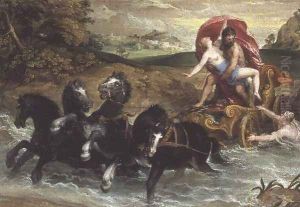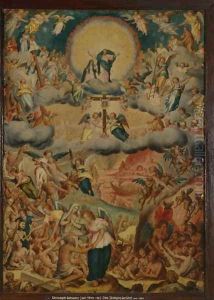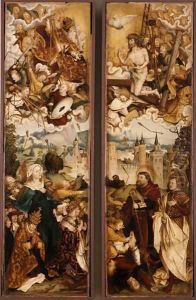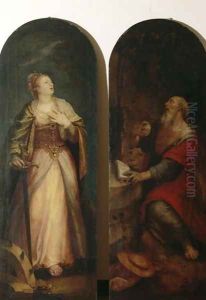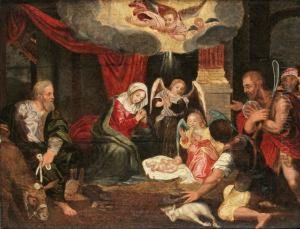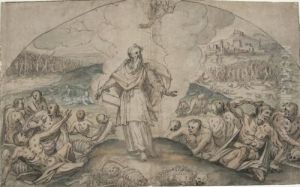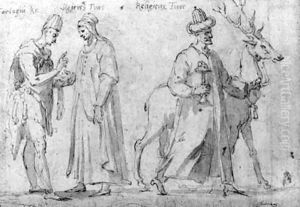Christoph Schwartz or Schwarz Paintings
Christoph Schwartz, also known as Christoph Schwarz, was a significant German artist born in either 1545 or 1548 in Ingolstadt, Bavaria, and he passed away in 1592. His exact birth date remains uncertain, but his contributions to the late Renaissance and Mannerist art movements in Southern Germany are well-documented. Schwartz is mainly remembered for his work as a painter, particularly excelling in religious themes and portraits, although his oeuvre also includes mythological subjects and historical scenes.
Schwartz's early life and training are not extensively documented, but it is known that he traveled to Italy, like many artists of his time, to study the works of the Renaissance masters. This Italian influence is evident in his sophisticated use of color, composition, and his adoption of Mannerist elements, which include elongated figures and unconventional spatial arrangements. Upon returning to Germany, he settled in Munich, which was emerging as a significant cultural center under the patronage of the Wittelsbach dukes, notably Duke William V of Bavaria.
In Munich, Schwartz became a favored painter at the Bavarian court, receiving commissions that allowed him to develop a distinctive style characterized by emotional intensity and a refined use of light and shadow. Among his notable works are altarpieces for Munich churches, such as St. Michael's Church, and portraits of members of the Bavarian ducal family. His religious paintings often reflected the Counter-Reformation's emphasis on piety and devotion, serving both as objects of veneration and as propaganda tools for the Catholic Church.
Despite his success, details about Schwartz's personal life remain scarce, and his legacy is somewhat overshadowed by other contemporaries. However, his contributions to the development of late Renaissance art in Southern Germany continue to be recognized by art historians. His works are preserved in various museums and churches, serving as a testament to his skill and the rich cultural milieu of late 16th-century Bavaria.
